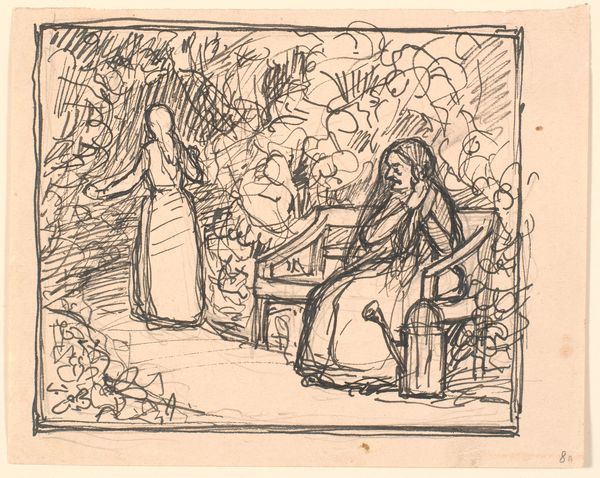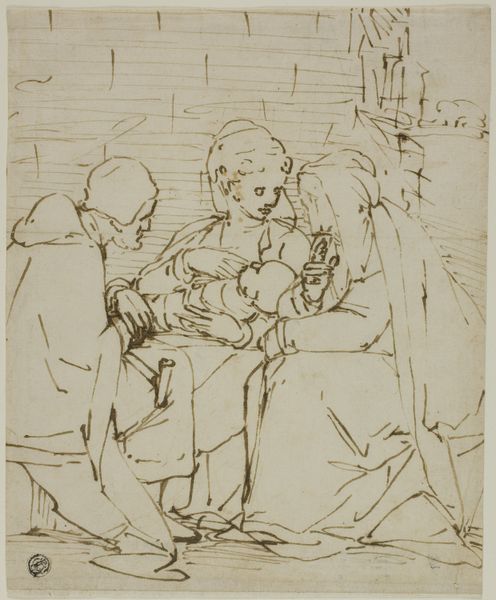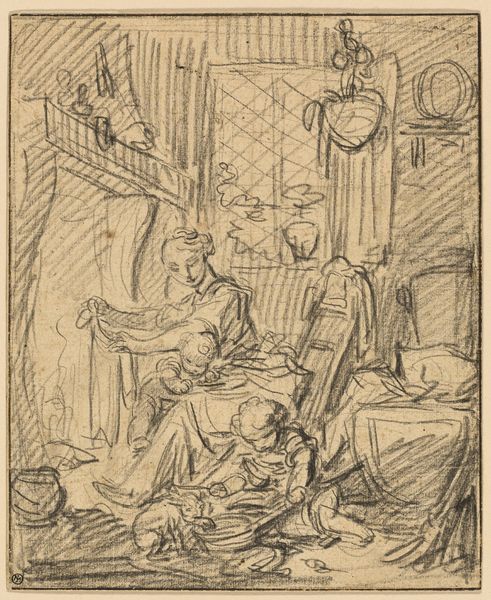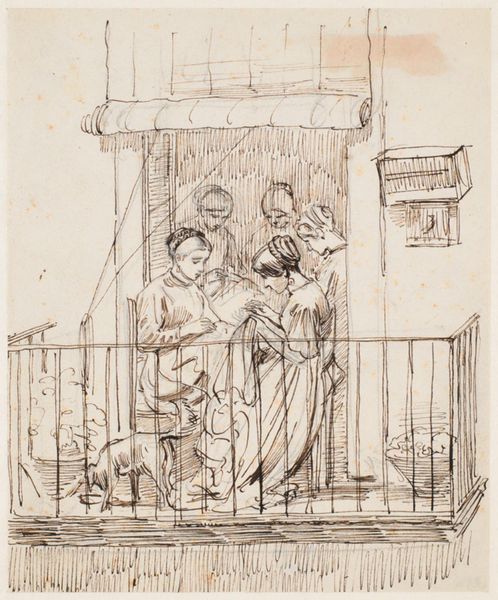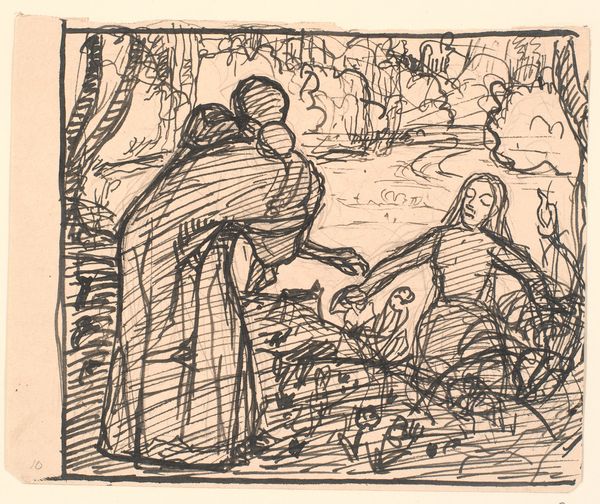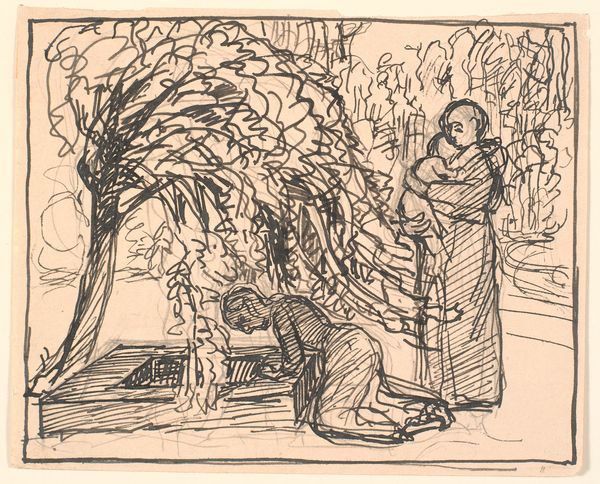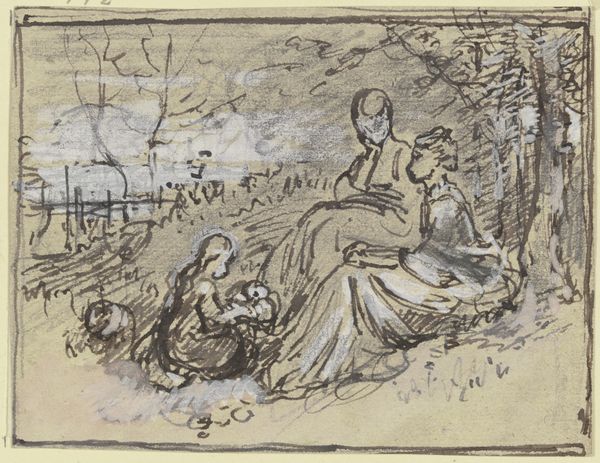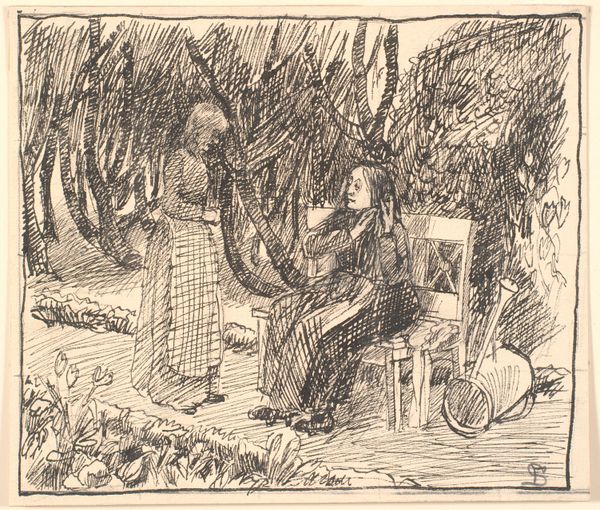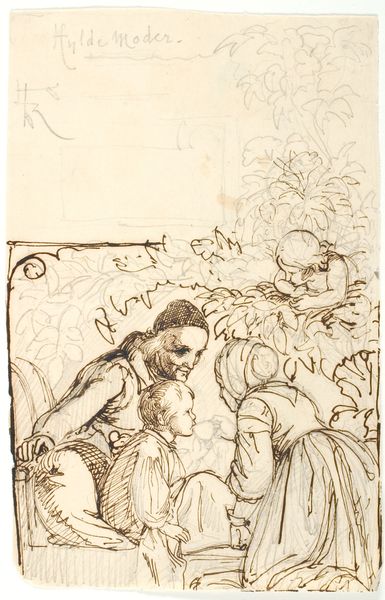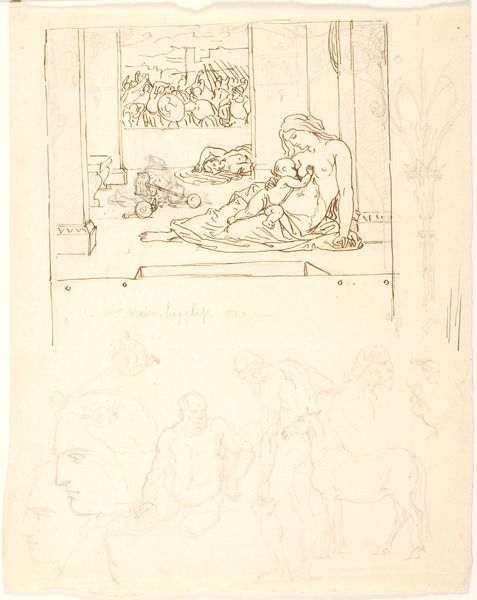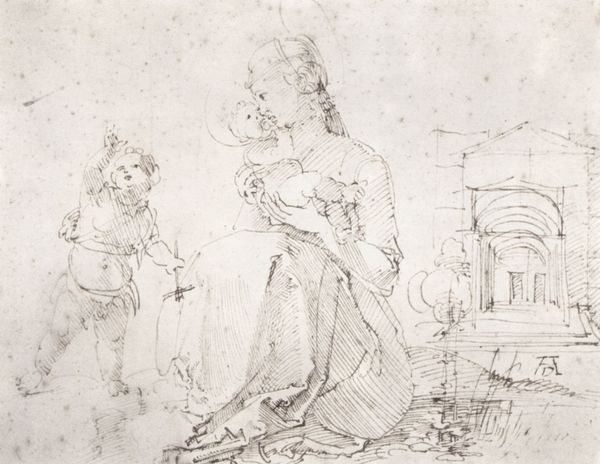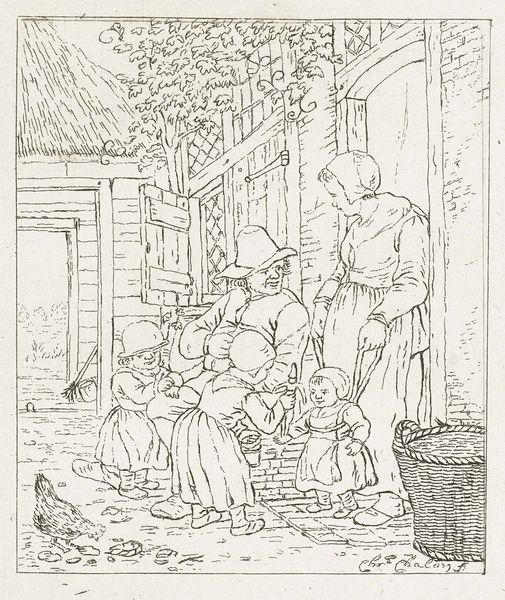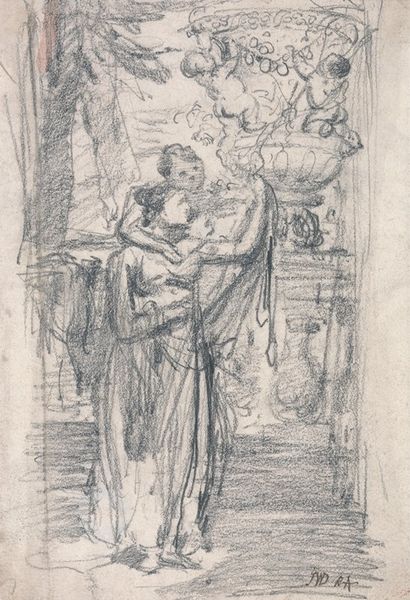
drawing, paper, pencil
#
drawing
#
landscape
#
figuration
#
paper
#
pencil
Dimensions: 159 mm (height) x 194 mm (width) (bladmaal)
Editor: Here we have Fritz Syberg's pencil drawing on paper, made between 1901 and 1902, titled "Har du ikke set Døden gå forbi..." which translates to "Have you not seen Death pass by...". It feels somber, unfinished, and strangely framed. What can you tell me about it? Curator: Well, first notice the visible grid underneath the drawing, a clear sign of the artist's process. This suggests Syberg was meticulous, perhaps planning a larger work or exploring a specific composition. This aligns with a Materialist approach as we consider the labour, and production evident here. What do you think of the implied setting? Editor: It's hard to tell exactly; maybe a garden or forest. But those rigid lines contrasting with the flowing dress give it a real sense of confinement or control over nature. Curator: Exactly. Syberg is grappling with both the freedom of natural forms and the control imposed by artistic conventions. Now, given the date, the turn of the century, how might social realities – industrialization, urbanization, labor conditions - be present, even indirectly, in his act of producing this landscape and figuration using pencil and paper? Editor: Hmm, it almost feels like a resistance to industrialization, a return to more traditional methods of image creation and maybe even rural ideals, even though it’s tinged with death? Curator: Precisely. Consider then the title of this piece – Death – juxtaposed with the medium of drawing. A material process directly accessible, but seemingly ill-equipped to represent grand, symbolic concepts. The “unfinished” quality, then, could also speak to art’s limitation in capturing raw emotion, the inevitability of social change or something larger. Editor: That’s interesting – so, even in what looks like a simple drawing, the materials and production methods reflect broader cultural tensions? Curator: Indeed. By analyzing the material elements – pencil, paper, the grid – and the labour involved, we move beyond just appreciating the image, to understanding it as a product and reflection of its time. Editor: I hadn’t thought of it that way. I’ll definitely look at materials differently from now on!
Comments
No comments
Be the first to comment and join the conversation on the ultimate creative platform.
